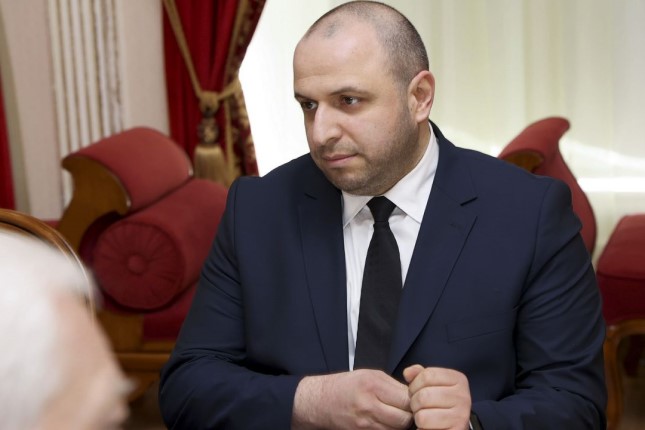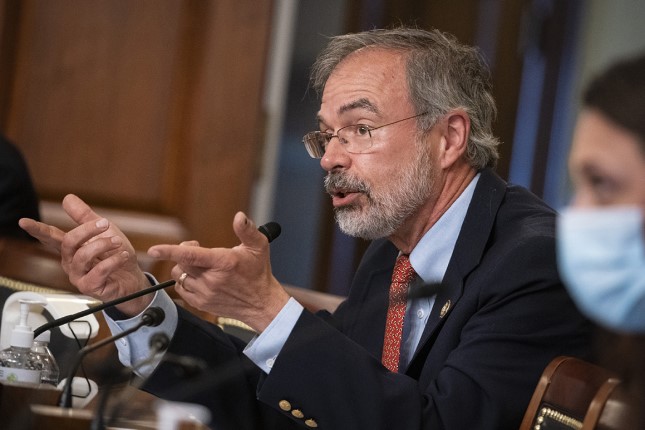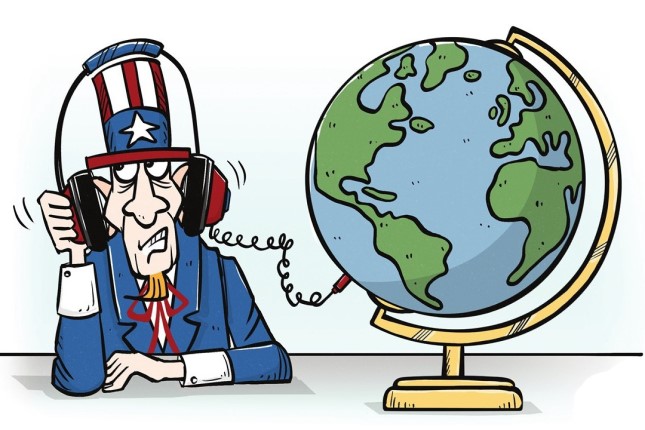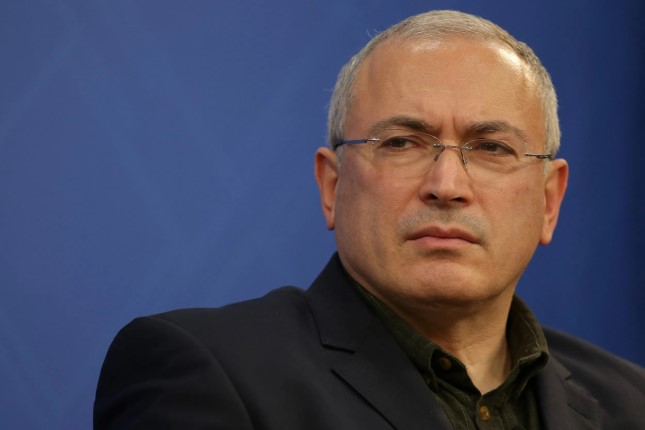Despite the deaths of tens of thousands of Ukrainian troops in the 89 days since the start of the offensive, Kiev’s forces have advanced only a few kilometers.
Last month, the Washington Post reported that US intelligence agencies have concluded that the offensive will fail to reach its main objectives of driving to the Azov Sea in order to cut off the “land bridge” to the Crimean Peninsula.
Announcing Reznikov’s resignation, Zelensky called for “new approaches” in the conduct of the war.
The New York Times, citing Ukrainian officials who spoke off the record, said, “Ukraine will need new leadership as the war drags on.”
Reznikov’s replacement, Rustem Umerov, is the co-chair of the Crimea Platform, a diplomatic initiative founded in 2021 to secure international support for Ukraine’s efforts to reconquer the Crimean Peninsula, which was annexed by Russia in 2014.
The appointment of Umerov, a native of Crimea, sends a signal that, in the face of a military debacle, Kiev is doubling down on its goal of recapturing the peninsula. Umerov, not surprisingly, has close ties to the American state, having taken part in high school in the Future Leaders Exchange program funded by the US Department of State.

Rustem Umerov, a member of the Ukrainian Parliament, attends the peace talks with Russian delegation in Gomel region, Belarus, on February 28, 2022. On Monday September 4, 2023 Ukrainian Defense Minister Oleksii Reznikov submitted a letter of resignation after President Volodymyr Zelenskyy said he would be replaced, and named his successor, Rustem Umerov, a Crimean Tatar lawmaker, as the new defense minister. Photo: AP Photo / Sergei Kholodilin / BelTA Pool Photo.
Umerov is, moreover, an investment banker, a fact that will allow for an even more lucrative alignment between the war and the international and national financial interests that are profiting from the conflict.
Reznikov’s departure took place against the backdrop of a protracted government crisis that has been bound up with a series of corruption scandals implicating the Department of Defense, in particular. In January, a deputy defense minister and the department’s head of procurement were dismissed after revelations that the department overpaid for food provided to troops. At the time, it was also widely reported that Reznikov would be dismissed, yet he remained in his position. At the time, the Zelensky government initiated the most far-reaching purge since the beginning of the war in February 2022. Now, another purge of the state apparatus is under way.
In a statement to the Washington Post commenting on Reznikov’s ouster, the Ministry of Defense said that “several high-ranking officials of the Ministry of Defense were removed from their posts and became subjects to investigation.”
A day before Reznikov’s dismissal, Ukraine’s domestic security service detained Ukrainian oligarch Ihor Kolomoisky on suspicion of fraud and money-laundering. Kolomoisky had been closely associated with Zelensky during the latter’s television career and was an early political backer. In May, the head of the country’s supreme court was arrested on charges of bribery. And on Friday, a former deputy minister of economy accused of misappropriating money for humanitarian needs had bail set at $25,000.
With more than $100 billion in US and international money flowing into Ukraine, corruption has been widespread. The New York Times reported that close to a billion dollars worth of weaponry had been paid for but not delivered. This is no doubt only a glimpse of the war profiteering and plunder that the Ukrainian oligarchy is engaged in as it sends hundreds of thousands of Ukrainian youth and workers to their almost certain death in the war. Corruption is second nature of a ruling class and state apparatus that emerged from the Stalinist destruction of the Soviet Union in 1991 and the orgy of plunder in the capitalist restoration that followed.
The shakeup in the Ukrainian Defense Ministry comes amid widespread commentary in the US media preparing the American public for the war to stretch on for years.
In an op-ed in the Washington Post, Max Boot wrote, “Ukraine may have a better chance to win in 2024.” This is the same Max Boot who, less than three months before, had interviewed General David Petraeus as saying that he expects “the Ukrainians to achieve significant breakthroughs and accomplish much more than most analysts are predicting.”
This time, Boot cites another retired general, US Army Brig. Gen. Mark Arnold, who declared that he is “more optimistic about the prospects for decisive operations next year.” He quotes Arnold as saying, “I remain very skeptical that a decisive battle will occur this year that makes a material effect toward Ukrainian victory. That can happen next summer when the majority of maneuver equipment arrives from NATO into Ukraine.”
In another column along the same lines in the Wall Street Journal, headlined “How to Help Ukraine Win the War of Attrition,” Walter Russell Mead declares, “Second, current American strategy is not working well.” He writes that “victory” will require an American commitment to another endless war, declaring, “If this is a war of attrition, the US and its partners are well-placed to win. We just need to make up our minds and roll up our sleeves.”
In yet another variation of this theme, former British Army General Richard Barrons writes in the Financial Times, “Ukraine cannot win against Russia now, but victory by 2025 is possible.” He continues, “Ukraine’s current counteroffensive will not throw Russia out—not that anyone expected it to. Nor is it likely to cut the occupation in half before the winter, which might have been one of the more optimistic aims. It has, however, shown how the Russian army can be beaten. Not in 2023, but in 2024 or 2025.”
The general continues, “Ukraine will take until mid-2024 to reconstitute a sufficiently powerful air force and is very short of the key equipment needed to clear mines. Fixing all this will take the war into next year at the least.”
In January, US Joint Chiefs of Staff Chairman Mark Milley proclaimed that the US plan was to “go on the offensive to liberate Russian-occupied Ukraine” and to “liberate the occupied areas.” With officials having pledged the support for the sweeping goal of retaking Crimea and the Donbas, the US media has gone to work proclaiming that Ukraine’s spring offensive would lead to the collapse of Russian troops in the equivalent of the Normandy landings on D-Day.
Now, with the offensive having created a bloody disaster, US officials are preparing public opinion for a years-long conflict, in which the current death toll, now in the hundreds of thousands, could well stretch into the millions.
Photo: Ukrainian Minister of Defense Oleksii Reznikov talks to the media after the meeting of the 'Ukraine Defense Contact Group' at Ramstein Air Base in Ramstein, Germany, Friday, April 21, 2023. Reznikov submitted a letter of resignation to the Parliamentary Speaker in Kiev, Ukraine, Monday, September 4, 2023 © AP Photo / Matthias Schrader.
Source: World Socialist Web Site.
































